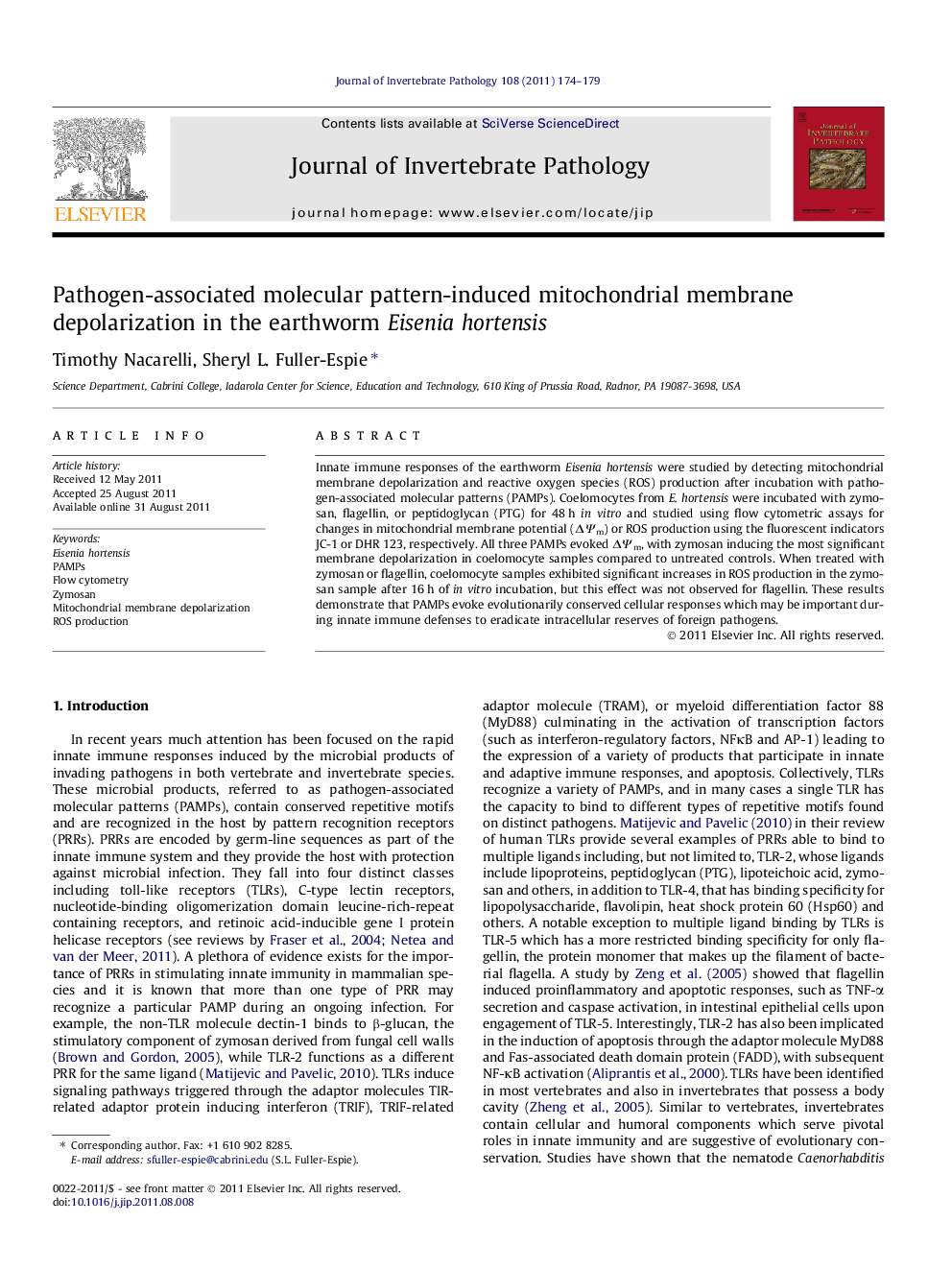| Article ID | Journal | Published Year | Pages | File Type |
|---|---|---|---|---|
| 6389757 | Journal of Invertebrate Pathology | 2011 | 6 Pages |
Innate immune responses of the earthworm Eisenia hortensis were studied by detecting mitochondrial membrane depolarization and reactive oxygen species (ROS) production after incubation with pathogen-associated molecular patterns (PAMPs). Coelomocytes from E. hortensis were incubated with zymosan, flagellin, or peptidoglycan (PTG) for 48 h in vitro and studied using flow cytometric assays for changes in mitochondrial membrane potential (ÎΨm) or ROS production using the fluorescent indicators JC-1 or DHR 123, respectively. All three PAMPs evoked ÎΨm, with zymosan inducing the most significant membrane depolarization in coelomocyte samples compared to untreated controls. When treated with zymosan or flagellin, coelomocyte samples exhibited significant increases in ROS production in the zymosan sample after 16 h of in vitro incubation, but this effect was not observed for flagellin. These results demonstrate that PAMPs evoke evolutionarily conserved cellular responses which may be important during innate immune defenses to eradicate intracellular reserves of foreign pathogens.
Graphical abstractDownload full-size imageHighlights⺠ÎΨm and ROS species production is revealed in response to PAMPs. ⺠Zymosan, peptidoglycan and flagellin induce changes in ÎΨm in Eisenia hortensis. ⺠PAMPs induce ROS production in earthworm coelomocytes. ⺠Flow cytometry enables useful study of innate immune responses in invertebrates.
